Art and Mental Health Link Love
A digest of this week's things I loved on Substack that I wanted to say a little bit more about ...
Each week, I want to share with you some of the things from other Substack writers that get me thinking. My niche is the relationship between art and mental health, with a focus on trying to understand how various mental health symptoms impact artistic process, productivity, medium, content, self-perception and reception by others. (And I believe that all of us are artists and all face mental health challenges to varying degrees.)
As I share these links, I’ll share the thoughts I personally had related to my niche. Please note that this doesn’t ever mean that it’s what the original author intended … just that I was inspired by their writing, want to give you my own thoughts from my personal lens, and hope that you’ll enjoy checking out their original pieces as much as I do.
HERE FOR SCI-FRIDAY? SCROLL DOWN TOWARDS THE END, AFTER THE SHORT SHARES
A Couple of Opportunities/Questions for You:
I’m launching a few new things around here and am trying to gauge if there’s any interest before I really move forward. Let me know your thoughts.
First, there’s the Create Me Free Substack Writers Support Pod. This is basically an “instagram pod” style chat group for paid subscribers to all share our work more readily. Here are the details.
And I am thinking about launching a special book club for paid subscribers reading only books but authors who are also writing on Substack. Here’s my initial note about that. I have lots of ideas about how we could do this but first I need to see if there’s interest.
Before We Begin …
As we dig in, I wanted to bring your attention to a thought I expressed in a Notes conversation with Andrew of
and also shared in my most recent writing roundup because whenever I do these roundups someone inevitably says something along the lines of how much they like being mentioned alongside big name writers. And I feel the same way whenever someone mentions me in a comment or post alongside famous authors. Like I sneaked my way into a celebrity party. So what I said that I think is also a good frame for us here is this:One of the things I truly love about Substack is that huge published names can co-exist alongside “unpublished” folks and everything in between. That doesn’t mean that we’ll all suddenly become @Chuck Palahniuk or @Margaret Atwood or @Elizabeth Gilbert but for me what it means is that oh yeah, those people are humans just like us, writers just like us. Maybe someone who reads them might stumble upon a piece we wrote and love it. Maybe we can just exist in this space with those writers we admire and know that we’re both part of that community and in our own lane.
From the past week or so then ….
of wrote Arctic Dreaming
Which mentions Reverse Seasonal Affective Disorder.
“Other than occasional dramatic hailstorms (which I love but apparently people who own things like cars and roofs don’t appreciate), summer is just too much for me. Too much unearned sweat, harsh light, wildfires, smoke, smog, dehydration, scorching dry-oven-heat or humidity (both awful), and this gawd-awful societal pressure that dictates we’re all supposed to fill every moment with sunscreen-and-bug-spray-coated activity, despite the fact that my energy reserves are melted and pooling listless somewhere at my feet.”
I learned about Reverse SAD several years ago. An online friend died by suicide, I launched a huge collaborative crochet art project called Mandalas for Marinke that included two years of daily blog posts raising awareness about depression and suicide, and since she had died in the summertime, this topic came into my awareness. More than anything, it’s a reminder than any time of year has the potential to be cyclically challenging for each of us, which is something we might want to become aware of within ourselves. If you have noticed ebbs and flows in your creativity, notice if they relate to mental health.
Jennifer goes on to share how she stumbled into coping with the challenges of summer by reading / watching lots of stuff related to ice, which then altered the content of her own creativity:
“A few evenings later I painted, watching soft hues of cobalt, charcoal and violet mingle in the wet texture of my cold-press paper giving shape to a glacier. A sense of peace beneath my breastbone mingled with an undefinable urgency. How could one scene contain so much exquisite beauty alongside such imperiled vulnerability?”
What a powerful idea. How can we find the antidote to what triggers challenges for us in any given time and then utilize that to add to our own body of creative work?
RELATED: Summer has not yet left the building by of :
“As the heat of the day builds, I retire indoors to sit at the open window so that the sounds and sights of the garden are still available. Mid-day brings out the butterflies, they don’t seem to mind how hot it gets, floating rather than fluttering, and settling on the late, honey-scented buddleia flowers. Red Admirals are the most frequent visitors, and there is a Peacock too, a smaller Gatekeeper and several large and small White. A pair of Holly Blue spiral up together over the hedge and take their chase into next door’s garden. The heat seems to fuel rather than drain them. I am envious.”
of shared September is Suicide Prevention Month
with her own story about mental health in the publishing industry.
“I felt like something was wrong with me. My peers seemed to thrive in the book industry while I was unemployed and healing. I wanted so badly to be “normal.” It felt like people I knew in the business had me pegged as damaged goods. No one knew what I had gone through, of course, because I wear my mask well. Depression was not openly discussed in publishing offices, which still rings true. Employees in the book industry absorb a great deal of stress: we are responsible for writers' careers, we need to make things happen for specific titles so our employers can meet their fiscal targets, and we don’t get paid much for any of it. Insurance plans (if you are lucky enough to have one) are mediocre and expensive for low-salaried junior employees. If the industry wants to retain talent and attract recruits, CEOs must take a long, hard look at the workload of understaffed departments. Publishers must support staff when an author becomes verbally abusive and resist blaming others when things go awry. Additionally, human resources departments should be aware that hardly anyone will admit to depression being a disability. People need to feel safe when they talk about their mental health instead of fearing they’ll lose their jobs or be considered “less than” if they disclose such information.”
One of my dream jobs is to work as a consultant for museums and galleries addressing mental health at all levels - from incorporating related exhibition text into catalogs and audio tours to addressing neurodiversity in the design of spaces. And that also means addressing the mental health of the staff who, similarly to what Kathleen describes, are stressed from a variety of things and often dealing with undiscussed mental health challenges. This is not a nice thing we should be offering in the best spaces; this is an imperative thing we should be building into all spaces.
of wrote Adjacent to the edge
which shares her truths about depression and how it impacts her writing as a public person and how just naming that can really help reduce the shame and make it all more manageable:
“What brings the most grief, though, is the difficulty of truly turning toward myself during these periods; instead of tending to myself when depression is visiting, I find myself worrying about when I’ll feel myself enough to return to sharing writing in ways that are meaningful or less drab. I find myself noticing the sensation of urgency when I don’t have anything to say, a sense of irrelevance gripping my neck. When countless people have shared how much you mean to them, how important your newsletter is to their weekly ritual, how wise you are, how much your words nurture and mend them, it’s hard not to feel like you’re failing when the words don’t come, when you need more time for your own mending, when your wisdom doesn’t always know how to reach your own self. And when I step back and think about how silly it is to assume anyone else’s needs, especially that of strangers, must come before my own, a new layer of judgment can quickly arise. This, of course, it all part of the process — not anything to hide or fix — just something to take stock of, just something I work to take care of and mend simply by noticing, by naming. Already, the energy of it is more settled, just through the writing of this paragraph.”
For me, one of the most challenging parts about depression is the shame and self-hate and hopelessness spiral that can emerge and drag it all out especially as it relates to my creativity. Naming it helps. Saying to myself “oh, okay, this is here again, let’s acknowledge and be gentle” helps.
Is the Depression Spectrum Really More Of a Circle? Or a Spiral? Or a Keyboard?
For those who aren’t familiar, double depression means that you are having a major depressive episode (with symptoms that last two weeks or more) and on top of that you that you have chronic depression where symptoms last two years or more.
of shared in Slow Saturday Thoughts:
“Rajiv Surendra’s YouTube videos are probably the most wholesome videos on the internet. Even his video comment section is a nice warm embrace of positivity. What hit me the most from this video on cleaning up a cluttered mind was when Rajiv said, “Your mind cannot hold an endless amount of stuff, so curate what goes in there.” Our minds are really sacred and we’re the only ones who can protect it from all the bs that makes us stew in [insert whatever lingering emotion that makes us feel bleh].”
I loved seeing the frame in the word “curate” here … because it’s not a new concept to me that we benefit from consciously choosing what goes into our brains but I usually hear it framed as “consumption” and while that has its place, thinking about curating it is more spacious to me.
This might also be because I’m deeply exploring this word right now. A professor this semester asked us to consider our personal keywords, touchstones for our life in 2-3 words … kind of like the one word intention I set at the start of each year for focus but on a bigger scale. I am considering “curate” because I do a lot of curating in various ways (including in these weekly digests) and looking at the etymology of the word, it relates to curing and taking care of. There’s more for me to explore there as it relates to my specific niche of better understanding the complex relationship between art and mental health.
of shared the history of Paint Louis
I often say that art can heal individuals and communities and this is an example of community healing:
John Harrington, co-founder and organizer of Paint Louis, reminisced last year about the St. Louis alternative/hip-hop scene of the late '80s and early '90s that led to this artistic event.
Back then, the flood wall was a gathering spot where DJs, rappers, and breakdancers would jam while graffiti artists painted murals into the wee hours. These gatherings provided a haven for artists and performers, free from police interference or gang-related threats …
For Harrington, Paint Louis was always more than just an event or a party. Recently, he commented on how growing up as a Black man in St. Louis presented its own set of challenges.
“The cops kept kicking us out of all the hangout areas like the Delmar Loop, the West End, Laclede’s Landing, so it was only place we could go where there were no people, no cops, nobody to bother us.”
Paint Louis became a means for him to give back, creating a sanctuary for the community to engage in artistic endeavors and show off an underappreciated art form.
Loved this article so if you haven’t seen it pop over and get inspired. <3
of shared in Colors of Cats and Trees
a creative practice that intrigues and inspires me:
“Someone's “true blue" had leaned green and someone else's “true blue" had leaned purple and so forth right around the color spectrum.
I learned from that class to select my own tubes of paint colors rather than blindly accept a manufacturer's preselected or pre-set color palette. Or if I do accept a “color set" to do it with purpose and awareness. I also learned that our color perceptions are due to our physical eyes as well as our personal preferences - both of which change over time.
Fast forward to nowadays and every year or two I do a color checkup with myself asking what's “true" yellow, blue and red for me now?”
I am taking an entire class this semester on perceptions which is largely about “what does it mean to say we see something” and how does that relate to art and visual culture. Artists see things in interesting ways and that is one of our superpowers.
PLEASE HELP ME MEET MY GOAL:
My goal is to find 1000 people who are interested in subscribing to this work at a rate of $100 per year. This shows the world that we as creatives believe artists and writers can and should earn six figures. I practice artistic tithing, meaning that at least 10% of my income automatically goes to support other artists, writers, makers, creatives, performers, etc. So if I meet my goal, we keep at least $10000 of that right in the creative community. I also make every effort to continuously encourage, support, share and promote the work of others.
$100 per year feels like a lot. But it works out to less than $2 per week.
of Wrote The Books I Wish Men Read
and I felt so much of it so hard. There are plenty of things to say but also Holly has really just said them all really well. The part I want to draw out is this:
“Over the years I’ve written hundreds of essays I’ve never published or opened again, just discarded and moved on from. This one though (originally called “Slap” because of the one time a massage therapist slapped my ass in the middle of a session), I’ve gone back to time and again, read and re-read, worked and re-worked, sent to multiple writer friends to read and edit.
It’s not that I’m scared to publish it (though to be clear I am). It’s more like this: I felt then (and even more now) like we’re in the part of history when things are unquestionably worse for women than they were in any of the years my (and every woman’s) anger was unrestrained or where some powerful terrible men actually suffered some consequence for causing it, and also the part where we’re really tired of being mad all the time, or when those of us who are still angry are treated as the problem or the ones who can’t move on.”
I think this specifically resonated because it’s a variation of a conversation I’ve been having a lot both personally and academically related to what we choose to create and share … It came up this week in a class where we were discussing the performance art of Wafaa Bilal, specifically an installation in which people could choose to shoot at him as he lived in a gallery space for a month. This brought up the conversation of trauma and replaying our trauma and how these experiences and images might traumatize others … and as a tangent from that, we started talking about the idea of creating from our joy rather than our trauma and started talking about the rest is resistance movement.
I feel like I came of age in a time when women writing openly about our trauma in a confessional way was helpful, empowering, mostly a positive even though it had its flaws. In the same way that I think talk shows even ridiculous ones like Sally Jessie and Jenny Jones had their place at the time because they were opening up conversations that we weren’t having. But they were also super limited and the time for them has passed. We’ve grown past that. I’m not saying this right.
I remember when I was in my late teens and early twenties, I was always asking people (usually cis gay men) about their coming out stories. It felt like progressive open allyship to ask and listen to those stories. Some of that was misguided beliefs on my part where I overstepped and I own that. But some of that really was the way it was at the time; I’ve double-checked with a couple people I knew then who said they did feel empowered sharing their coming out stories. But these days, I would never presume someone even has a coming out story, let alone that it’s my place to ask.
I suppose what I’m trying to say is that many of us write to understand our worlds, reflect those worlds back to others and hopefully change those worlds into something better through shared understanding. And a lot of that means writing from our tough experiences, our individual and collective traumas, but also we can get sick of doing that and we can feel overwhelmed by still having to do that and we might want to write from the other parts of ourselves. There’s not an answer here. Just thoughts.
of wrote The Evil of Two Lessers
“What about decision making? Natasha offered. The burden of the right choice…over-researching options. I feel like more often than not recently, I’m choosing either the lesser of two not-great options or what’s more familiar, even if it’s not necessarily “best.”
I thought of Emily Oster’s decision-making mantra “There is no secret Option C,” in which she advises her readers to remember that having two not-great options doesn’t mean that a third, better option is waiting in the wings.
She gives the example of getting divorced vs. staying in an unhappy marriage, and another example of a couple trying to choose between two great job offers in different states, or two meh job offers where they’d get to live together. In both examples, both options are going to suck to experience in some capacity. But by not committing to one, things may just get worse, or the decision gets made for you.
Oster writes, “It doesn’t make it easy to choose something with downsides, but it forces us to accurately weigh the risks and benefits of both choices, rather than weighing them both against an imaginary (but dominant) option…by facing the decision head-on, you may be able to make the options you do have better.”
I think that can be a helpful frame at times. And also what this made me think of was SARK’s joyful solutions in her book Succulent Wild Love which suggests that when two people want different things, the goal isn’t to compromise but rather to find a bigger solution that pleases both parties, to embrace the idea that everyone can get what they want. You might not get exactly what you want but you can get the essence of what you each want. And I think that this might be true for the different parts of yourself as well.
of shared in It’s Time to Lift Your Pen:
“After a time, I snap out of my trance and recall why I’m here. I turn my attention to what is going on inside, lift my pen again and away I go.
It looks dreadful. My writing cannot keep up with my thoughts. I segue from one thing to another. Find words for the emotions that have threatened to overwhelm. Scare me witless.
I turn towards those ugly feelings; the inconvenient and distressing ones, too. Offer up space for rumination. Catastrophy.
Where previously, an irrational superstition would have stopped me from allowing these thoughts into the actual world, now I see the diffusing power of giving them their place. It’s an evolution of my therapy experience, where for three years I was offered safe harbour, meted out in 50-minute chunks, to say anything. Anything.”
I love this because of how it shows that the experience of therapy can make changes throughout our lives and that we can continue to support those changes through our writing / art.
Lindsay is launching a four week long “compassionate, supportive space for you to explore how writing for yourself might benefit your mental and physical welbeing” for paying subscribers starting soon. Check it out.
of shared 5 Ways to Show Up For Yourself
“We don’t wake up and decide to be the villain of the day–sometimes, we operate from spaces of resentment, apathy, and selfishness because we spent too long putting everybody’s needs before our own. We poured into people who didn’t love us back with the same level of intentionality, care, or concern. We tried to be everything to everybody, only to push ourselves into a space where we were too burnt out to do anything at all.
But here’s the thing: when you choose to give yourself what you need, you live a happier life and you increase your capacity to show up for the people you love. This world can be exhausting, in so many ways—but when we acknowledge ourselves and listen to our emotions, we make space for a world where we can love each other more generously, in word and in action.”
One thing I think is key is honoring, nurturing, and making space for your creative self. Although I write a lot about the shadow side of the relationship between art and mental health, it all stems from a place of believing in the cathartic power of creativity. This could be woven into several of the five lessons Michell offers and it’s something that stands out for me as a thing most of us try to put second to all of our other “shoulds” but actually needs to be a priority for many of us.
of shared Who Will They Think You Are?
which is about ancestors and storytelling, how we can’t know what they didn’t leave behind and a call to action to save our stories for future generations so they don’t have to wonder.
“I applaud you if you write a diary or start to write an autobiography. But you can also start by adding your personal views, your emotional narrative, to your photo captions and stories. Please do so, as future generations will love to know more about who you really are.”
As I shared in my comment on that post, last night I went to see a talk by Latipa, a Filipinx artist who spoke about her experience of trying to find old photos of her home town. Due to colonization etc she learned that the only photos were in DC at a colonial archive, so they were represented only through the lens of the Philippines as property of the United States. She shared about that experience and about her reworking of that narrative. She has an exhibit here right now in which those images and her own family images are displayed alongside a narrative that she wrote through imagined letters between her great grandmother and her great granddaughter. There's more to it than that but it highlighted how we don't know those histories but they do live within us and so in a sense we can know them, or at least imagine them. Her work is in "ancestral futurism" which refers to working with collective memory. Very interesting work.
The talk was also with Louise J. Miranda Ramirez, Chairwomen of the Ohlone/Costanoan-Esselen Nation who spoke about how she learned her indigenous language not that long ago and how she’s preserving that language as well as the stories of her people. She said that a lot of their young people aren’t ready to hear these stories but that her life’s work is making sure that the stories and language are all there for them when they are ready so they don’t have to do the work that she’s doing to find and preserve it. She believes that the ancestors are alive amidst us now and that we know their stories in our cells. Much to think about.
RELATED: of shared a guest post from Jonny Miller called We Have More Than Five Senses:
“Interoception, in essence, means awareness of our internal state. This includes learned associations, memories, emotions, and all the data running through the interconnected pipelines of the 100 billion neurons in your body. The word has two parts: “intero–” refers to “internal” and “–ception” to “awareness.”
RELATED: of quoting Marina Abramovic:
“The body is the microcosmos. By understanding your own body, you understand the world. We never actually put much attention to our body, we try everything else to do that. We are constantly busy: wake up in the morning, you open your emails, you make a phone call, you check your messages, you speak with friends, you have dinners. You never sit and do absolutely nothing. And, to me, doing absolutely nothing is the beginning of something. Because then the body starts talking to you and you really understand what it is.
The body has the ancient knowledge, it can exactly tell you with intuition what to do. We fucked up with the mind! Mind is overthinking.”
of is one of the many people who are exploring Love Letters to themselves thanks to ’s Letters from Love.
Wendi shares some of her own love letter thoughts that are helpful but also this gem:
“It’s also totally understandable if you can’t bring yourself to write, much less share, a love letter to yourself. Before I wrote my first one, I had to explore why self-love was so hard for me. I wrote “I love myself” at the top of the page and then wrote all of the reasons that was not true. I wrote about my emotional reaction to the idea of loving myself.”
Sometimes our brains don’t let us love ourselves. Sometimes that’s what true. Rather than fight it and try to pretend to ourselves that it’s true, it can be helpful to just soften around it. Explore why it’s not true. Open yourself to the idea that perhaps you don’t love yourself or your creativity or your brain right now … but maybe you could be curious about it and move from self-hate to something more neutral that maybe, just maybe, might create space for self-love later.
of shared Vladimir Nabokov’s Butterflies
And I soaked up every word. There are also great photos. When I first started reading the piece, which shares some of the historical trauma Nabokov experienced, I immediately thought of all of the metaphors around butterflies and transformation. One of the quotes I often turn to in times of distress is that saying found on journals and magnets (author unknown): “just when the caterpillar thought her world was coming to an end, she became a butterfly.”
But then as I read, I really got hooked on this section:
“Though he is revered as one of the greatest writers to ever live, Vladimir Nabokov, in the end, would have preferred a scientific life to a writer’s life. During an interview in a 1967 edition of the Paris Review, he made the source of his enthusiasm clear:
INTERVIEWER: Besides writing novels, what do you, or would you, like most to do?
NABOKOV: Oh, hunting butterflies, of course, and studying them. The pleasures and rewards of literary inspiration are nothing beside the rapture of discovering a new organ under the microscope or an undescribed species on a mountainside in Iran or Peru. It is not improbable that had there been no revolution in Russia, I would have devoted myself entirely to lepidopterology and never written any novels at all.”
I don’t even know exactly what I want to say about that. Something about being curious as to if the novels were catharsis for him or just work. Something about needing to have creative outlets outside of our creative work (which Bailey’s article addresses in more depth.) Something about how art can be a huge part of our lives and yet not be the only or even the main thing that heals us.
of Shared How Do You Know When Your Art Is Good?
In response to a question that includes:
“Every time I post an episode I fight an awful battle, between the bitch in my head that murderously covets external validation and the little kid that just wants to finger paint. Is that normal? Will that go away?”
Bringing her own experience into it, she responds in part:
“Ask Molly slowly grew into something I loved. And it only became that kind of creation, one that feeds my imagination and encourages all of my other writing, because I managed to tolerate the feelings of self-hatred, panic, and paranoia that I’d argue are a NATURAL part of putting your experimental work out there and learning as you go.
Why are self-hatred, panic, and paranoia natural, when you’re making art and sharing it these days? Why is it natural to imagine a skeptical Greek chorus packed with ex-friends and eye-rolling former classmates and snickering frenemies?
Because it’s unnatural to experiment with new genres and then show what you made to 17,000 people. Similarly, it’s unnatural to share your stray opinions with millions of strangers on social media, so it’s natural to feel paranoid about it.”
When I explain to people that the work I do is about the relationship between art and mental health, they always assume I mean art as therapy. And art is therapy and it’s catharsis and it is many great healing things. For me, that’s just a given. But what really interests me is the shadow side of art and creativity. The ways it triggers “self-hatred, panic, and paranoia” and what we need to do with that if we’re going to keep creating.
Jess of wrote Have I Failed?
“I’ve been reminiscing recently about various creative projects I’ve started over time and there’s a part of me that still nags at myself, right in the back of my brain. It says — why didn’t you stick at one of those things and make it great? Another failure, maybe. But, thankfully they’re overridden by the thoughts that say — I know these ventures were periods of exploration and I can still choose to pick up creative things at any time, new or old, and find whatever brings me joy at that point. I’m extremely consistent and disciplined in some areas of my life but I know that I need to allow myself more flexibility, nuance and contradictions.”
One of the things that helps me a lot as a lifelong creative living with chronic depression is to see my entire life as a body of work. It all counts. It all matters. And also any one project isn’t the be all end all. It doesn’t have to get completed (or even barely started) to have an important role in the entire body of work. I imagine that I’m long gone and somehow my work has become famous, or at least fascinating to a devoted small group, and someone is putting together all of my work for a show, a book, a museum, something. And how, removed from that, it might actually be interesting to see all of the unfinished stuff as part of the process. It helps me to take this long view, whether or not it ever plays out that way, as I move forward with my own challenges over unfinished projects.
of a wrote Creative Algae Bloom
Which provides a moving image for when our creative works get out of control, including because of this which resonates for me and probably many others:
“I don’t think I’m the only creative that struggles with this. Everywhere you look, you see artists and makers being encouraged to churn out more, and more, and more. In my recent rug weaving workshop, I chatted to a curator from Canada about the current state of contemporary art. I’d been to several exhibitions recently of artists I really admired, only to be disappointed by the quality of their recent work. She confirmed that it absolutely was a problem, that artists were being encouraged to exhibit too frequently and pressured to churn out work instead of giving it the time and care that it needed. On a more positive note, she mentioned artists that she’d worked with who refused to speed up their process to meet demand, going years between shows to allow their work to properly develop.”
RELATED: Rachel Connor of shared Activating Creativity After a Pause
Exploring that idea through the lens of baking bread from a sourdough starter:
“The sourdough starter is an always-accessible, bubbling energy that activates creation.
How can we access the same levain in our creative lives?
One simple thing we can do is stop expecting so much of ourselves.
When we use a sourdough starter, the frequency of baking doesn’t matter. We don’t necessarily need to bake a fresh loaf every day. What matters is that we consistently nourish the starter, feeding it what it needs.”
of wrote about Glimmer Hunting
She quotes Sarah Duigou:
“I invite you to start glimmer hunting. Deb Dana, whose work is focused on using the lens of Polyvagal Theory to understand and resolve the impact of trauma in our lives, explains that glimmers are the opposite of triggers, which cause emotional discomfort and activate us towards a stress response. In contrast, glimmers are sparks of emotional comfort that bring about a sense of awe.”
And shares more about what glimmers are. Then adds:
“When I first heard of glimmers, I made a pact with myself to get curious about these subtle moments of magic. Glimmers are fleeting, but in my experience, they carry hope, healing and happiness in abundance, and embracing these tiny instants of beauty or oneness immediately pulls me into the present.”
I love this, and I’m going to become a glimmer hunter.
SHORT SHARES:
From of in Gratitude and Connection:
“What takes my breath away is knowing that hidden away in offices, coffee shops, and Zoom meetings across the globe, there are minds imagining new worlds, unknown geniuses reinventing new paths for us. There are now 8 Billion of us, each one of us part of the problem and each one of us a potential source of solutions.”
From in Conversation with at discussing the value of art in the age of AI
which includes lots of rich thoughts about the unique nature of humans creating art as compared to robots trained by humans to create art.
“The artist who is hired to paint a portrait and he takes 20 years to get it done—it's because, in the meantime, he painted thousands of portraits so he could do this one. That one portrait that he's taken 20 years to finish, that he hadn't worked on at all, he just jots it down in five minutes, and it's perfect. And that’s because he has developed something that was not possible to develop any other way except through a long period of development and decision-making by one person.”
From of in I Bought a Big, Weird House as a Woman By Myself
“You are capable! You can figure out stuff! You can do hard things even if you’re a little delirious while you do them! That whole adage of “stick to what you know” was made up by an insecure man who didn’t want to be showed up by his peers. None of us would ever grow as humans if we just “did what we knew.” You gotta do the weird & wonderful stuff you know nothing about, but are salivating over. You gotta find the things that are big and scary because otherwise you will stay small and unremarkable. (And will probably smell bad.)”
From of in Creative Spark #6
“When I’m blocked, it’s normally me that’s standing in the way. I am my own blocker. I’m in my head about making it perfect, making it successful, taking the next steps, all before I’ve even started. I have all this pent up energy wanting to be released onto the page, but it’s being misdirected into all these internal worries, where it’s swirling around in a whirlpool without any way out. I need to get the flow back on the right track and let it out.”
From of in Voices:
“Vincent Van Gogh became one with the earth and leaped to another dimension. He reached for the secrets of eternity and was lifted to that magical realm. A wheat field was the home of living spirits who emit not just light but sound. Voices.
Find any place isolated from the visual clutter and noise of today. There is magic in the ground beneath your feet.”
wrote about Mrs. Piggle Wiggle for by
and this reminded me of how books heal us:
“I dreaded lying alone at night, trying to fall asleep, when I was little. Leaving the communal coziness of watching TV with my family felt like an unjust punishment. Once I learned to read though, my room became a sanctuary for my growing imagination rather than a prison of boredom.”
SCI-FRIDAY
Starting last week, I decided to join in on Sci-Friday, even though I don’t consider myself super knowledgeable about the genre. I enjoyed thinking about the books and shows that did stand out for me. I’ve since been thinking a lot about how I can relate this to my own interests and plan to seek out more reading/shows that explore mental health through a sci-fi storytelling lens.
Thanks to Andrew for inviting me to join and to several people for comments that made me feel welcome. <3 I totally felt insecurity that my choices would just be naive or dumb, like I was trying to play in the sandbox with the cool kids when I’m so not a cool kid. Of course, it says something about me that the sci fi kids are the cool kids but I’m not sure what it says. In any case, they made me feel welcome, and I appreciate it.
I’ll start with a shoutout to who wrote this week
about how “Ursula K. Le Guin, a prolific and visionary science fiction author, delved into the theme of loneliness in her works with profound depth and sensitivity.” A quick search into her mental health brings up a New Yorker article that shares, in part, “Despite her growing success, she suffered periods of depression in the nineteen-sixties—“dark passages that I had to work through” is how she described them to me, as if they were vexed sequences in a novel. She wrote them into her fiction, she added, in the Earthsea novel “The Farthest Shore,” exploring a metaphor she borrowed from Rilke’s “Duino Elegies”: depression as a journey through the silent land of the dead.” Something for me to further explore.
My Five For Sci-Friday
Since I haven’t delved into new material yet, I won’t focus too much on the mental health lens this week, and instead will just share five more sci-fi books/movies/shows that have made their way into my awareness over the years and stuck there in the memory banks for one reason or another.
1. The Fifth Element
I saw this in the movie theater with friends when I was in high school. I remember loving the visual elements of the film. And feeling not-so-smart discussing the film with the sci fi guys which perhaps is where my insecurities about this stem from now that I think of it! I have to confess I don’t remember the movie too well but I do remember learning at some point that the writer started writing it when he was a teenager but it didn’t become a film until a couple decades later, which just always struck me as having a lot of meaning. Like it had to come into its own in the right time, as so many of our creative things do.
2. Divergent Book Series
I picked up Divergent in an airport bookstore on a whim and it was the perfect easy (YA) read for an airplane ride. I liked it enough that I read the rest of the trilogy. And somehow it became a point of conversation with a new friend and we went to see one of the movies together. The whole idea of being born into one faction but living in another and not wanting to be found out just resonates with so many other types of life experiences.
Fun fact: I briefly got paid to ghostwrite a Divergent blog.
3. Her
I forgot about this one last week because I tend to just think of it as a romantic drama. I suppose I tend to pigeon hole “sci-fi” into a really specific category (think Star Trek) and forget that it’s got a whole bunch of range and subgenres that often overlap with my other interests. I think I’m drawn towards stories that are really close to where we are at right now with technology but not quite there … which is why I liked Black Mirror and also Her. Because they grapple with questions that are pressing right now even if the technology isn’t quite exactly that way just yet.
PS … nothing wrong with Star Trek though. Shoutout to
of who just shared in Imagining a Radically Different World:“It's safe to say Star Trek is a defining mythology in my life.
Star Trek, along with a social gospel-infused Methodism, shaped my understanding of justice, multiculturalism, and the inherent worth of every being. Star Trek also shaped my view on economics.”
Those are actually the only three I can think of right now so I’m going to add two more that I plan to read:
4. Books by Charlie Jane Anders
When I first moved to San Francisco, I used to go to Writers with Drinks at the Makeout Room pretty often. It was hosted by Charlie Jane Anders whose own writing was sci-fi. I remember enjoying it though I don’t quite remember any particular stories. Charlie has since written several books and I’m going to check those out at some point.
5. The Deep by Rivers Solomon
This is one of several options listed in an article I found about mental health in sci fi books and is the first I’ll probably check out as I move further into the genre.
And I like to add a bonus one from my partner because he is much more into the genre. This week he told me that there’s an interesting mental health element to Raised By Wolves so perhaps I should watch that.
Find more Sci-Friday recommendations and thoughts this week from
Thank you for supporting my work with your Create Me Free subscription. Our expenses reflect our values and priorities, and it means a lot to know that you value my research and writing about the complex relationship between art and mental health. This support means more than I can ever express.
See benefits for paid subscribers here.
On a really tight budget? Learn about my Pay What You Can option here.

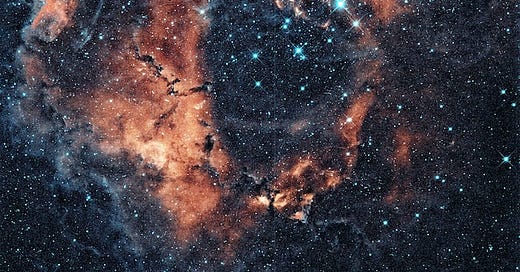



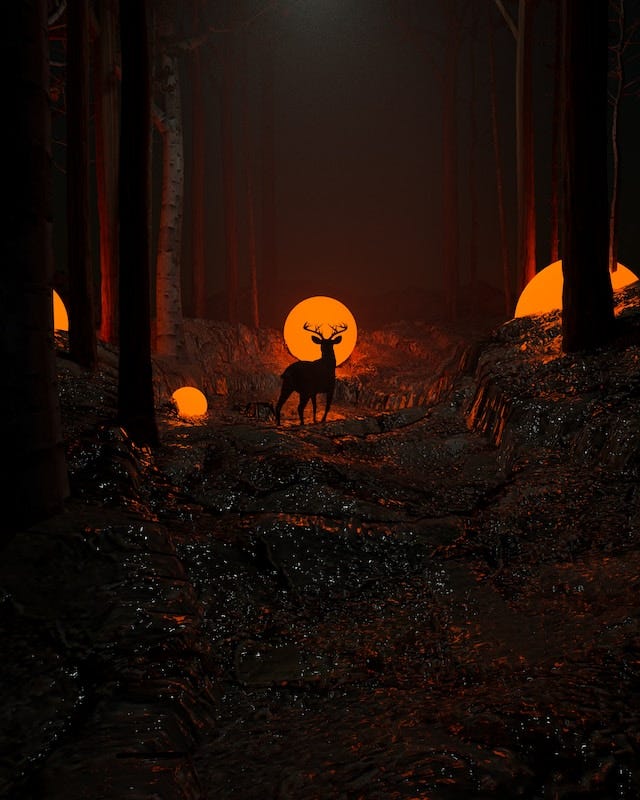




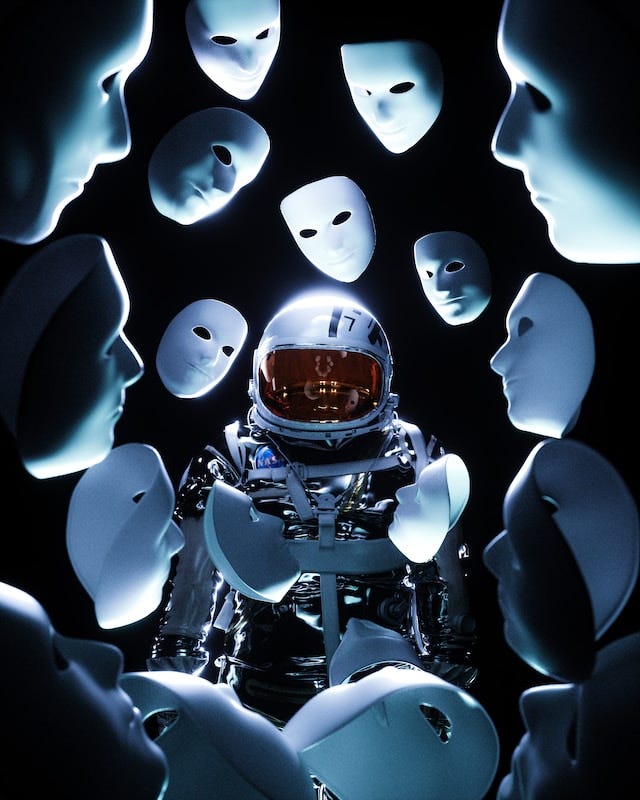


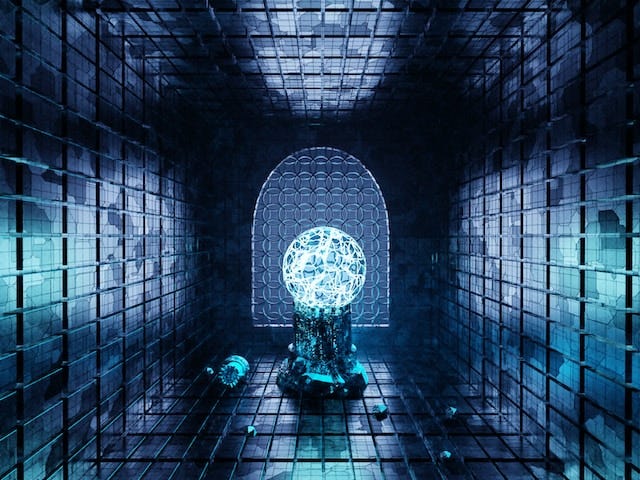
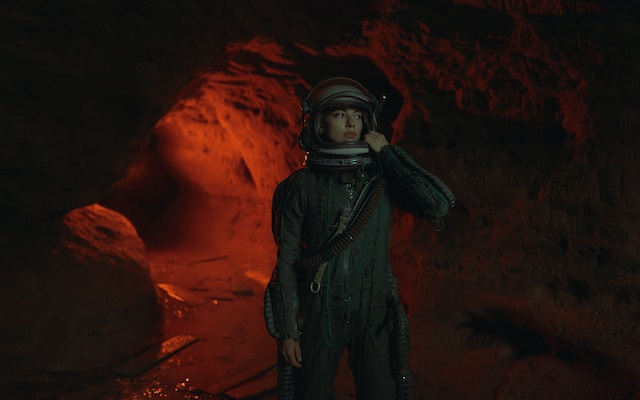
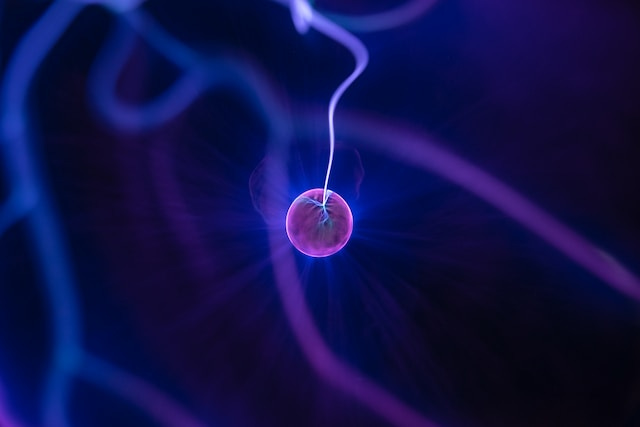
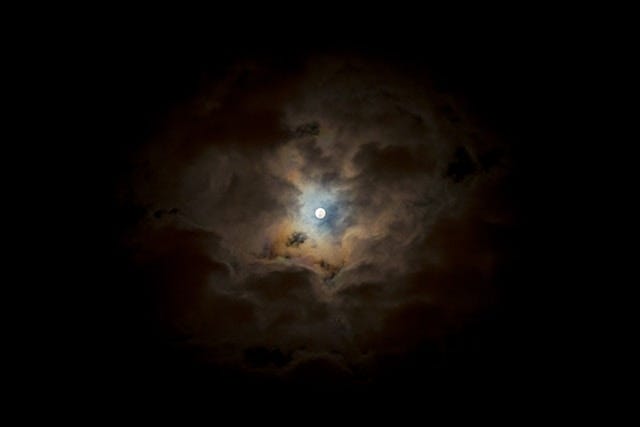


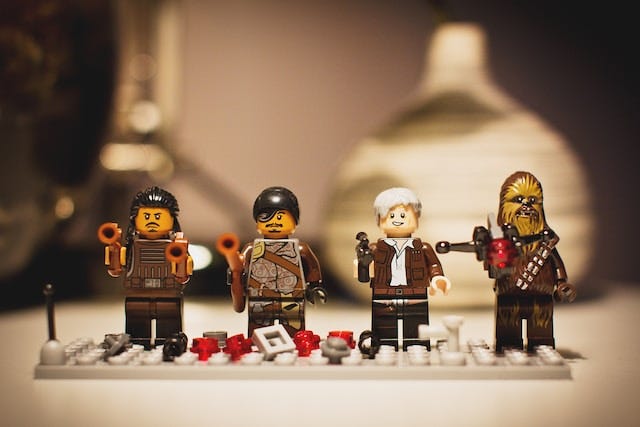
This is such a beautiful round up, I'm so pleased I found it today and so much of it resonated with me. It's only recently that I've discovered Reverse SAD is a thing and it's not just me "being weird" for not enjoying summer. It's so heartening to know that others feel the same. And that we can all collectively rejoice in these cooler autumn days.
Another epic round-up. Such generosity at the heart of these!